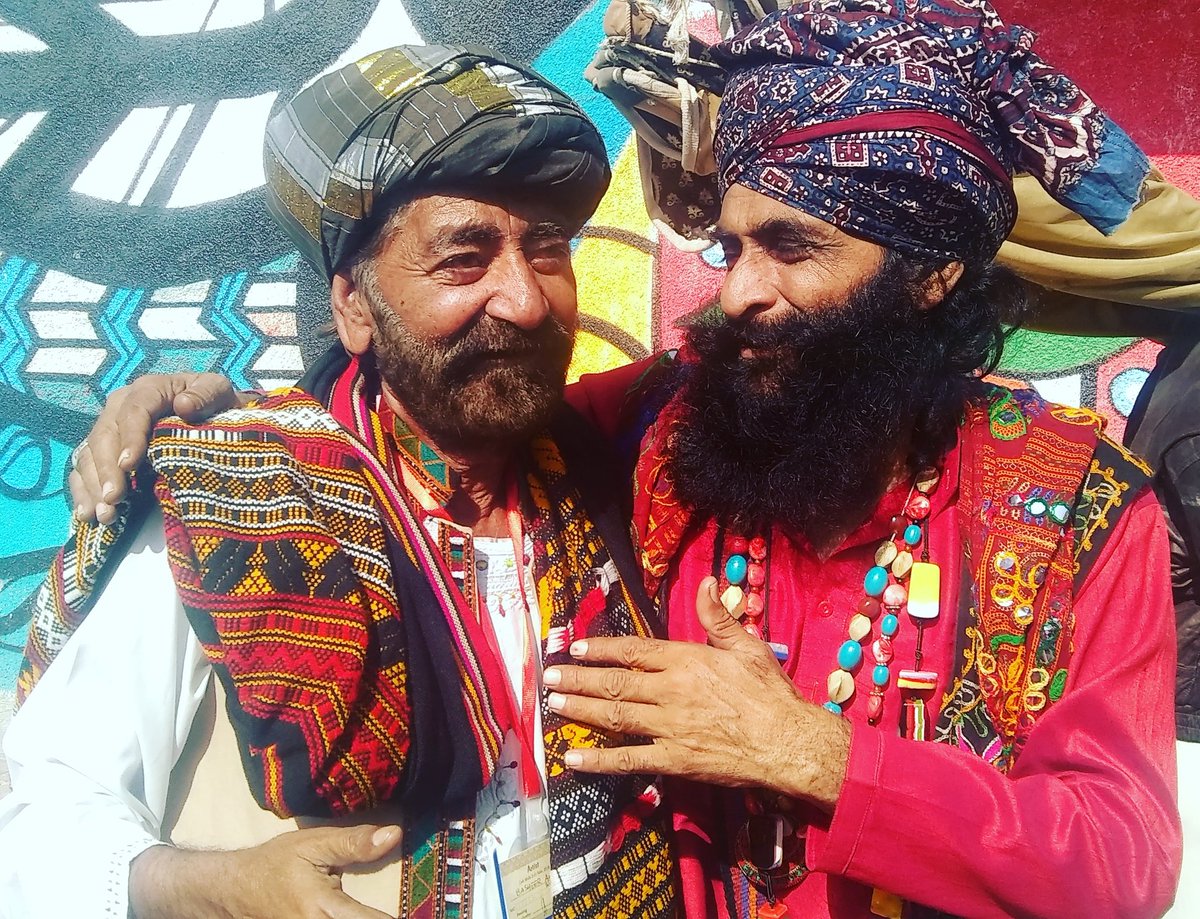
The tribe’s main vocation was singing, so Zarsanga began to sing at an early age. Zarsanga was born in 1946 into a nomadic tribe in Laki Marwat in the present-day Pakistani province of Khyber Pakhtunkhwa (KP). When in the 1960s and 1970s the government(s) in Pakistan began to ensemble folk musicians from the country’s main ethnic groups, who used to often accompany the country’s rulers on foreign trips, one of the most famous Pashtu vocalists to emerge during this period was a young Pakhtun woman called Zarsanga. Pakhtun singers that emerged in Pakistan also gained popularity among the Pashtu-speaking population of Afghanistan (and vice versa). Pakhtun folk music was already popular among the Pakhtuns of Pakistan after the country’s creation in 1947. Interestingly, though both, the 20th century secular Pakhtun nationalists, as well as the more religious and conservative expressions of Pakhtun identity, celebrated the Pakhtun culture’s militaristic tenor, Pakhtun folk music is remarkably romantic and poetic in nature, with the singers mostly voicing sagas of longing for their beloveds (who are in some foreign land), or for the mountains and rivers of the Pakhtun lands that the singer misses. There are conflicting theories about the origins and evolution of Pashtu folk music, but there is widespread agreement that though throughout its history, music in Pakhtun culture was largely seen as a personal hobby and vocation of Pakhtuns belonging to the ‘lesser tribes’, it began to emerge more strongly during the Pakhtun Durrani Empire in Afghanistan (18th-19th Century) that laid the initial seeds of what would develop into becoming modern Pakhtun nationalism and identity in the 20th Century.Īs a consequence, Pakhtun folk music became increasingly linked to expressing and romanticising the rugged geography of the Pakhtun-majority regions in South Asia and the culture of its people.

Though, most experts place the origins of the Pashtu language and culture in the first millennium BC, Pashtu folk music that started to gain mainstream recognition in the 20th Century (in Afghanistan, India and then Pakistan), most probably began to develop in the region 500 years ago. The history and tradition of Pashtu folk music is almost as ancient as the history and origins of the Pashtu people. Video | Mai Bhagi performing the song on PTV in 1974:
#Humma humma allan faqeer tv#
She continued to perform the song in concerts and on TV until her death in 1986 at the age of 66. She soon began to accompany a number of other folk singers who were often sent to various countries by the government of Zulfikar Ali Bhutto to perform at ‘folk concerts’ and ‘folk melas’ in cities like New York, London, Moscow, Paris, etc.īhagi was already in her 50s when she first gained widespread national recognition in the 1970s. The song speaks of a dreamy young woman of the desert standing underneath a neem tree, watching the sands of time roll by, as Thar’s ‘national bird’ (the peacocks) and koels dance and sing around her, becoming Mai Bhagi’s main claim to fame after she performed it on TV. It is believed that though she had been singing ‘ Kharee neem kay neechey’ ever since she was a teenager, she first sang the song on Radio Pakistan sometime in the early 1960s.īut it wasn’t until she sang it on the state-owned PTV in 1974 that the song became a national mainstream hit and turned Bhagi into a Sindhi/Thari folk star. She was paid a check of Rs.20 for her efforts.īy the early 1960s, Mai Bhagi was regularly appearing on Radio Pakistan singing songs in Thari and Sindhi languages, but she remained rooted in her small and impoverished village in Tharparkar.


It was at one such ceremony that a producer associated with Radio Pakistan noticed a then 30-something Bhagi and offered to record some songs by her in the studios. She began to sing Thari songs as a child.Īfter the creation of Pakistan in 1947, Bhagi’s family began to regularly travel to Pakistan’s largest city (and future capital of Sindh), to earn some money by singing at marriage ceremonies of Sindhi families residing in Karachi. Mai Bhagi was born in 1920 in a small village surrounded by the vast and unforgiving Thar Desert.


 0 kommentar(er)
0 kommentar(er)
